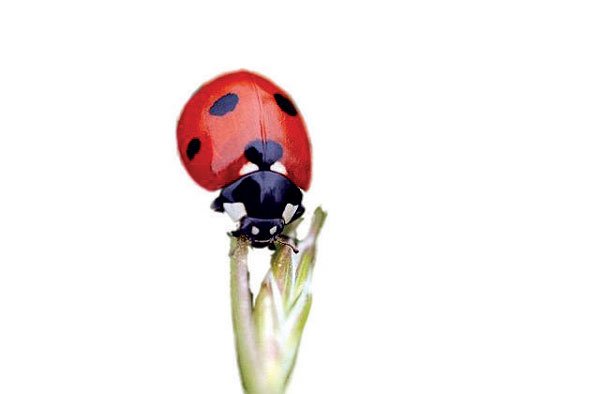They’re lurking in the back yard: vicious, bloodthirsty, armed
to the teeth and ready to kill
… even if they are less than 3/8 of an inch long.
Predatory bugs serve as natural pesticide, ridding gardens of
pesky invaders like aphids, cutworms, potato beetles and
caterpillars.
They’re lurking in the back yard: vicious, bloodthirsty, armed to the teeth and ready to kill … even if they are less than 3/8 of an inch long.
Predatory bugs serve as natural pesticide, ridding gardens of pesky invaders like aphids, cutworms, potato beetles and caterpillars. In the hunt for more ecologically conscious agriculture, they’re the new frontier.
Predatory insects are just one of three beneficial bug types found in the average garden, controlling bad bugs by feeding on their ranks, sometimes consuming hundreds in a single day, according to the Lowe’s garden Web site.
Parasitic insects also limit the number of harmful bugs in the area, but instead of feeding on the adult progeny of their enemies, they lay their eggs in, on or near victims, where larvae will feed on the host.
Pollinators may not kill other insects, but they are vital to ensuring plants flower and fruit. Bees traipsing pollen everywhere keep greens going.
The importance of pollinating insects has long been understood, but now a growing number of farmers are using predatory insects as pest control, according to Glenn Scriven, CEO of Biotactics in Perris, Calif.
“One of the problems of commercial agriculture is that it’s not diverse,” said Scriven. “You have one crop, one pest. There’s not a mix, not a place for the natural enemies to hide and be available.”
Scriven began studying spider mites, “one of the most serious pests worldwide” in the 1960s.
The bug is particularly difficult to eradicate due to its rapid reproduction rates (once a week in the summer) and high resistance to pesticides, so Scriven and other researchers began looking into history.
“Most of the pests we have in this country came along with other crops brought here from somewhere,” he said. “(The crops) came along with their pests, but often did not go along with their natural enemy.”
Researchers imported pest-killers from other countries, perfecting estimates of the number of bugs it would take to keep a crop pest-free (30,000 predators per acre for strawberries) and learning to cultivate them en masse.
Unfortunately, predatory bugs aren’t exactly loyal. If their needs aren’t met in the immediate vicinity, they wander off, according to the Association of Natural Biocontrol Producers.
Nectar-bearing plants are an excellent way to keep them around, but for more bug-specific information it is best to look up the individual predator on the association’s Web site, www.anpb.org.













